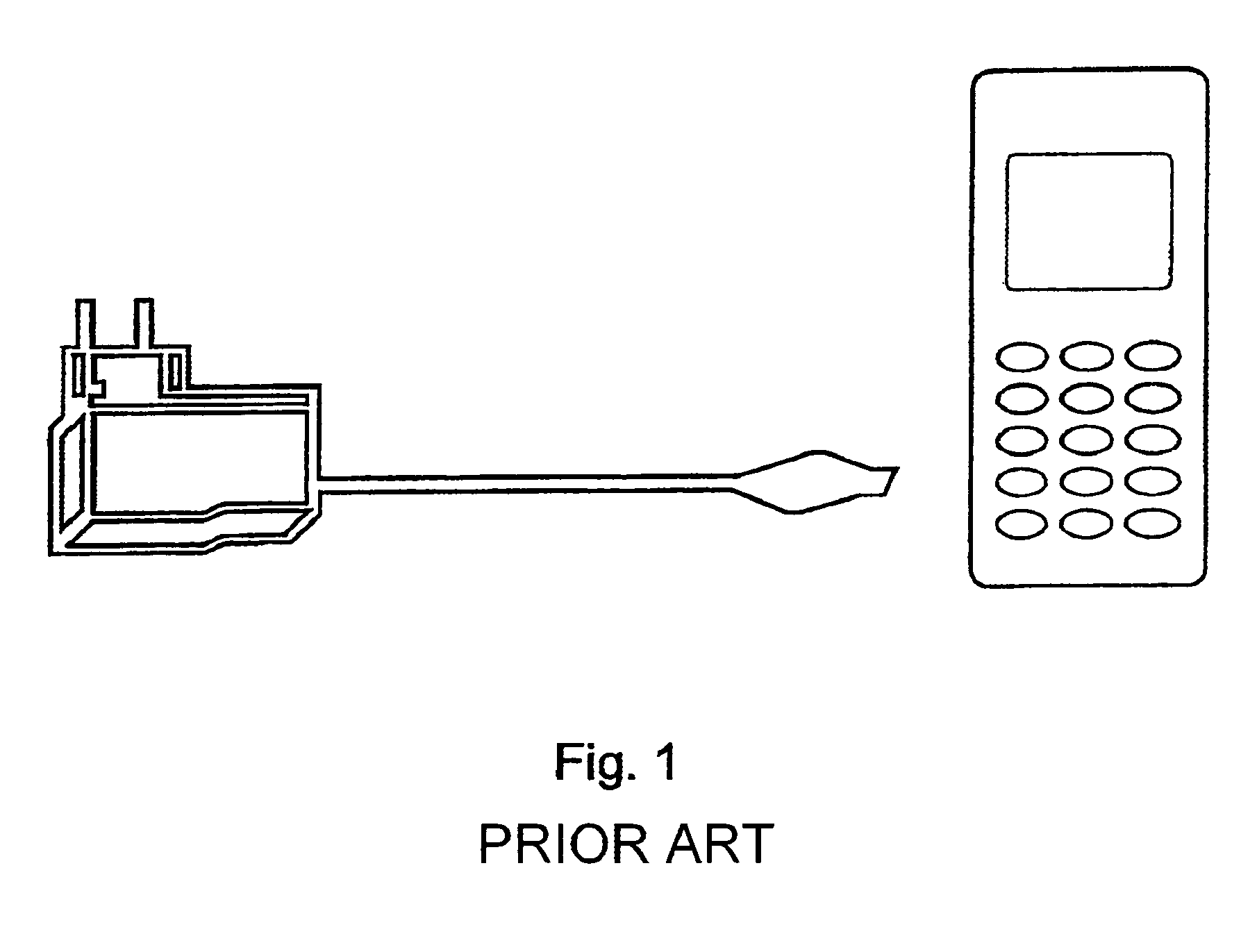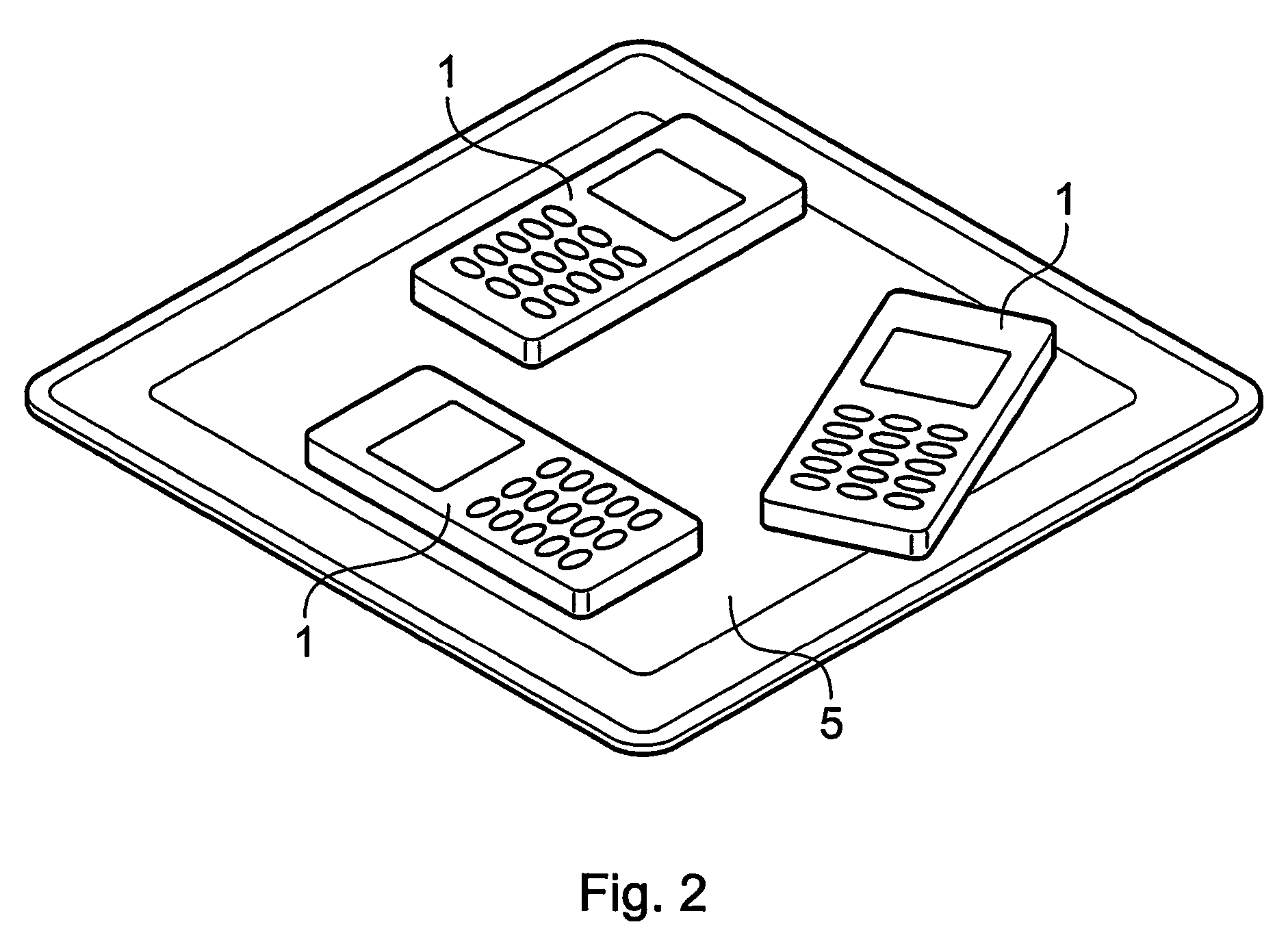Retention of inductively rechargeable devices on an inductive charger
a technology of inductive charging and inductive charging, which is applied in the direction of marine propulsion, special-purpose vessels, vessel construction, etc., can solve the problems of inconvenient user requirements, disadvantages for users, lack of positive mechanical retention of such a surface, etc., and achieve the effect of convenient user information
- Summary
- Abstract
- Description
- Claims
- Application Information
AI Technical Summary
Benefits of technology
Problems solved by technology
Method used
Image
Examples
Embodiment Construction
[0059]Referring to FIG. 3, there is shown a power receiving device 1, in this embodiment the device is a mobile phone. The mobile phone 1 has a connecting means 3 attached to the back of the phone. In this embodiment the connecting means 3 of the device 1 is a patch of self-adhesive Velcro® of the “male” type. This is black and slightly prickly, informing the user that the phone may be charged on a charging surface. FIG. 3 also shows a charging unit 5. In this embodiment the charging unit 5 is an inductive recharging pad. On the surface 7 of the pad 5 is attached a patch of self-adhesive Velcro® of the “female” type 9, which acts as the connecting means of the charging unit. This is black and slightly fuzzy, informing the user that the pad may charge devices.
[0060]To mate the phone 1 and the pad 5 temporarily, the user simply presses the phone 1 onto the pad 5 (or drops it, if the pad is below the phone) and the Velcro®3, 9 holds the phone in place on the pad. The phone can be place...
PUM
 Login to View More
Login to View More Abstract
Description
Claims
Application Information
 Login to View More
Login to View More - R&D
- Intellectual Property
- Life Sciences
- Materials
- Tech Scout
- Unparalleled Data Quality
- Higher Quality Content
- 60% Fewer Hallucinations
Browse by: Latest US Patents, China's latest patents, Technical Efficacy Thesaurus, Application Domain, Technology Topic, Popular Technical Reports.
© 2025 PatSnap. All rights reserved.Legal|Privacy policy|Modern Slavery Act Transparency Statement|Sitemap|About US| Contact US: help@patsnap.com



